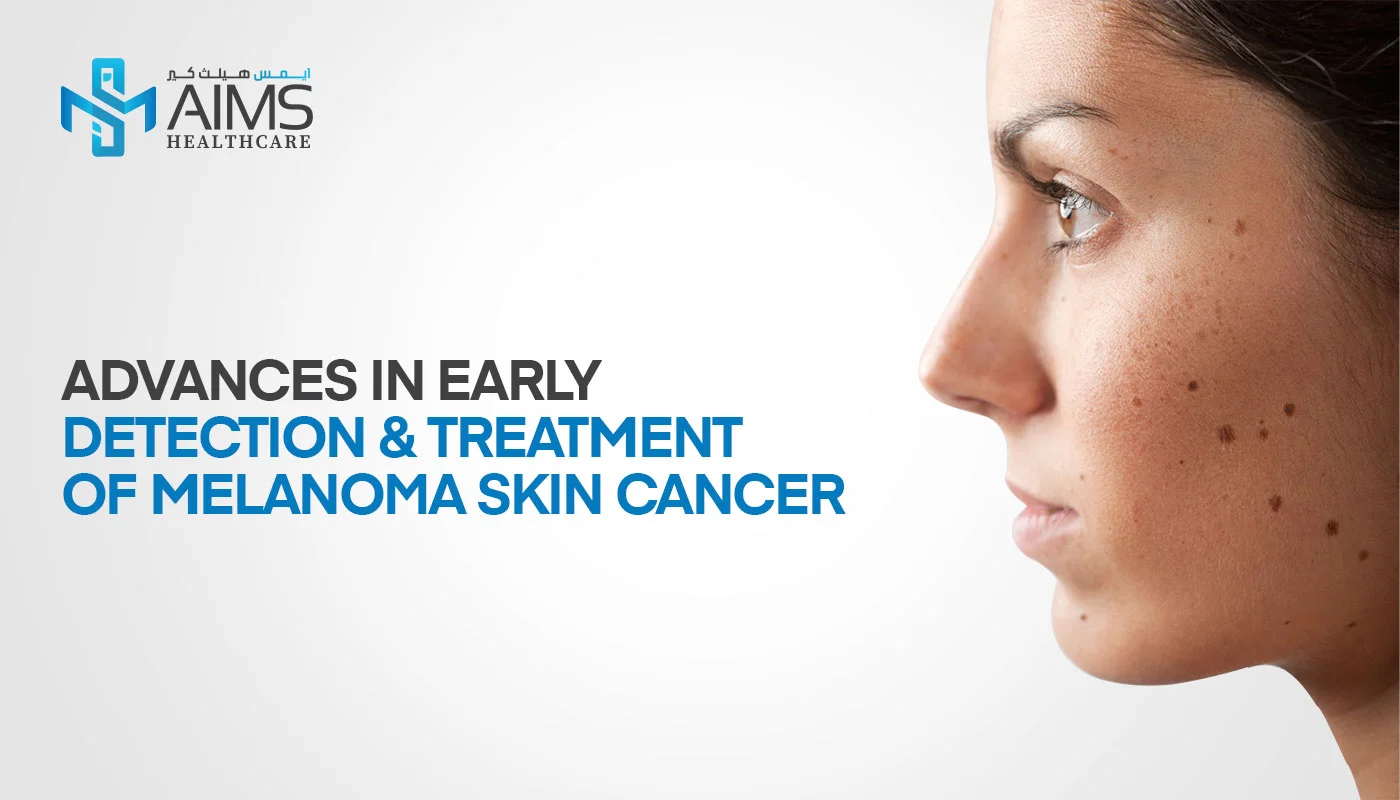
At-Home Fertility Test for Men – A Complete Guide
Table of Contents Having your semen tested at home is the best way to know whether you’re fertile. With at-home testing, you can check how

Around 16,700 people receive a melanoma diagnosis annually in the UK. Over the past few decades, there has been an increase in the number of melanoma diagnoses. In the UK, melanoma is the fifth most frequent type of cancer.
In recent years, remarkable progress has been made in the field of melanoma research, ushering in a new era of early detection and treatment options. Whether it be innovative screening techniques or groundbreaking therapies, it has evolved the landscape of medical science to promise improved outcomes and survival rates. So if you wish to learn more about melanoma skin cancer’s symptoms and treatments, this blog empowers readers with knowledge by unraveling the complexities of melanoma and its progression, along with fostering a proactive stance towards prevention and timely intervention. Join us on this journey through the frontiers of medical breakthroughs in the battle against melanoma.
Melanoma is a type of skin cancer that is developed from skin cells called melanocytes.
There are 2 main types of skin cancer:
| Non melanoma skin cancer (which includes basal cell skin cancer,squamous cell skin cancer and other rare types) | Melanoma skin cancer. |
Melanocytes, which are skin cells, are where melanoma begins. These cells are situated between the basal cell layer and the deep layer of the epidermis. Melanin is a pigment produced by melanocytes. Skin gets its natural color from this. The pigment aids in shielding the body from the sun’s ultraviolet radiation, or UV light. Furthermore, it can also be developed in a mole or, more rarely, in areas that are not exposed to the sun.
Melanoma can develop in individuals at any age. However, it’s more common in older people. It often affects younger people fairly frequently when compared to most other types of cancer. Sunlight and sunbed ultraviolet radiation are the primary environmental factors that raise the chance of acquiring melanoma.
Other risk factors that you need to consider include:

When you visit a dermatologist that is board-certified, they will:
In the event that a skin spot appears to be skin cancerous, your dermatologist will numb the affected area before excising all or a portion of it. This procedure, known as a skin biopsy, can be carried out in an office setting. A dermatologist may complete this straightforward treatment swiftly, securely, and with ease.
Here’s an explanation of what each stage of melanoma means:
| The cancer occurs in the top layer of skin. | |
| The tumor has gotten thicker, but the malignancy is limited to the skin. The melanoma’s skin is still intact in stage 1A. The melanoma’s skin has become ulcerated (broken open) in stage 1B. | |
| The thickness of the melanoma has increased, ranging from 1.01 millimeters to more than 4.0 millimeters. Despite being thick, the cancer has not penetrated the skin’s surface or touched adjacent skin. | |
| The melanoma has metastasized to one or more adjacent lymph nodes, also known as lymph glands, or adjacent skin. | |
| The most developed stage is this one. It indicates that the melanoma has migrated to one or more internal organs, such as the brain or lungs; to lymph nodes that are not directly next to the melanoma; or to skin that is distant from the site of the melanoma’s first appearance. |
Early detection of melanoma skin cancer is important for successful treatment. Follow the rules:
Regular skin self-exams and professional dermatological checks contribute to early detection, increasing the chances of successful intervention and recovery. Furthermore, there are new and innovative technologies and solutions that can improve the accuracy, speed, convenience, and accessibility of skin cancer and melanoma detection. Some of these are:

Treating skin cancer and melanoma depends on the type, stage, location, and size of the tumor, as well as your overall health and preferences. The standard treatment options for skin cancer and melanoma are:
These treatment options have different side effects and complications, such as infection, scarring, nausea, fatigue, etc. They may also not work for everyone, as some tumors may become resistant or recur after treatment.
That’s why there are new and promising therapies and strategies that can enhance the efficacy, safety, personalization, and affordability of skin cancer and melanoma treatment.
Some examples of these therapies and strategies are:
These therapies and strategies can effectively help you treat skin cancer and melanoma, but they are not cures. You should always discuss with your doctor or dermatologist the best treatment option for your case.
In the field of cancer research, the continuous advancements in melanoma early detection and therapy provide a ray of hope. The advances in novel treatment strategies and diagnostics point to a paradigm shift in favor of more focused and efficient methods. While we applaud these successes, we must not undervalue the significance of routine skin examinations, raising public awareness, and using sun protection techniques. Accepting these developments in melanoma treatment not only raises survival rates but also serves as a prime example of the amazing influence that scientific discoveries can have on our capacity to face and overcome extremely difficult medical obstacles. Prospects for the future are bright, motivating a shared will to remove the stigma associated with melanoma.
Skin cancer can appear as new growths or modifications to existing moles, displaying traits such as asymmetry, uneven borders, varying color, and changes in size or shape.
Tattoos have not been conclusively connected to skin cancer, despite being uncommon. But it’s crucial to keep an eye on skin changes and protect tattooed areas from the sun.
Yes, if left untreated, skin cancer can be lethal. Sun protection and routine skin examinations are essential for prevention.
Recognize warning signs like changes in moles using the ABCDE rule and consult a dermatologist for professional evaluation.
UV rays damage skin DNA, leading to mutations that can trigger the development of skin cancer over time. Protection from sun exposure helps mitigate this risk.

Table of Contents Having your semen tested at home is the best way to know whether you’re fertile. With at-home testing, you can check how

Table of Contents Healthy Fasting, Happy Digestion! Explore Tips for a Smooth Ramadan. As the holy month approaches, fasting holds significant spiritual and cultural importance

Table of Contents Healthy Fasting, Happy Digestion! Explore Tips for a Smooth Ramadan. As the holy month approaches, fasting holds significant spiritual and cultural importance